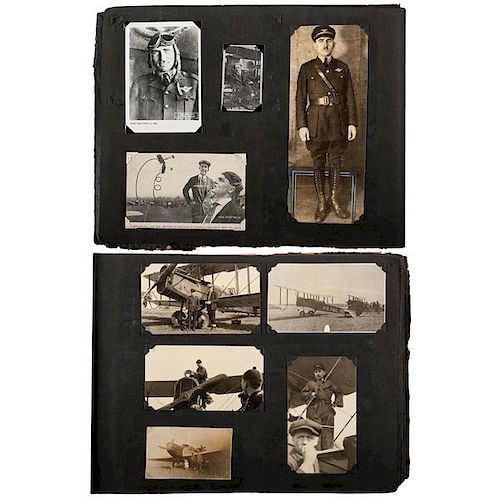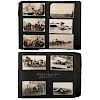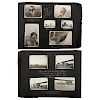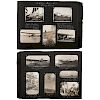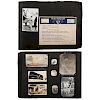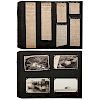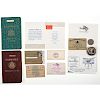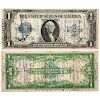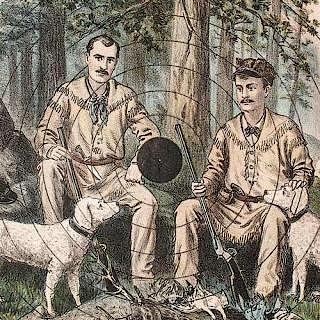Aviation Archive of E. Hamilton Lee, First US Air Mail Service Pilot
About Seller
6270 Este Ave.
Cincinnati , OH 45232
United States
With offices in Cincinnati, Cleveland and Denver, Cowan’s holds over 40 auctions each year, with annual sales exceeding $16M. We reach buyers around the globe, and take pride in our reputation for integrity, customer service and great results. A full-service house, Cowan’s Auctions specializes in Am...Read more
Two ways to bid:
- Leave a max absentee bid and the platform will bid on your behalf up to your maximum bid during the live auction.
- Bid live during the auction and your bids will be submitted real-time to the auctioneer.
Bid Increments
| Price | Bid Increment |
|---|---|
| $0 | $25 |
| $500 | $50 |
| $1,000 | $100 |
| $2,000 | $250 |
| $5,000 | $500 |
| $10,000 | $1,000 |
| $20,000 | $2,500 |
| $50,000 | $5,000 |
| $100,000 | $10,000 |
About Auction
Nov 20, 2015 - Nov 21, 2015
Cowan's Auctions dawnie@cowans.com
- Lot Description
Aviation Archive of E. Hamilton Lee, First US Air Mail Service Pilot
E. Hamilton Lee (1892-1994) was the first civilian pilot to fly the US Mail in 1918 and the first pilot hired by United Airlines when it formed as the nation’s first commercial airline in 1927. Lee took an interest in flying after meeting Calbraith Rodgers when he stopped in Chicago while making the first transcontinental flight in 1911. He made his first solo flight in 1916 and was soon hired by the Army Signal Corps to train pilots for service in World War I, which led to his being hired as the first civilian pilot in the US Air Mail Service. Lee flew the crucial route between New York and Washington for years and in 1927 was hired by Boeing Air Transport, which evolved into United Airlines. As the most senior pilot first commercial passenger airline, he was considered “the flyingest man in the world” when he retired in 1949, with over 4.4 million miles flown in over 27,000 hours. He is credited with a quip famous among pilots that goes, “There are old pilots and bold pilots, but there are no old, bold pilots.” His personal photograph albums contain scores of photographs of the fatal crashes of his colleagues that support this. Lee himself, however, lived to 102, and on his 100th birthday was given the controls of a flight that contained a load of US Mail, becoming not only the first ever US Mail pilot, but also the oldest.
The centerpiece of the archive is an extraordinary photograph album documenting Lee’s time with the US Air Mail Service and including hundreds of photographs of his pilot friends and aviation pioneers in the 1910s and 20s. Album is 11 x 15 in., containing 420 photographs at 3 to 9 images per page, as well as dozens of newspaper and magazine clippings mentioning Lee and other air mail pilots. Most photographs are dated 1914-1920, and arranged in small groups by subject with captions on the album pages. There are photos of E.H. Lee himself, his fellow pilots, instructors and students, various models of planes, air stunts and dozens of plane crashes. Frequent names include Gordon K. Hood, Art Smith, Floyd Thompson, Earl F. White, Charles Lamborn, Max Miller, Frank McCusker, Walter A. Pack, Trent C. Fry, Orton W. Hoover, Roy Francis, and Charles H. Anglin.
The following is a partial listing of subject matter, in album order: 50+ photographs of the planes, instructors, and students at Ellington Field, Texas, where Lee worked as an instructor for the Army; aerial views of Ellington Field and Houston; acrobatic and radio ships flying above Houston, Sept. 1918; hundreds of planes and thousands of men lining the runway at Ellington Field, TX, on Armistice Day, Nov. 11, 1918; RPPC of female aviator Ruth Bancroft Law; the crash of Lt. C.H. Platt; the fatal crash of Lt. Jerome Dixon; fatal crash of Lt. Vernon Castle; a cadet’s crash into a freight train at Ellington Field; the crash of Capt. Spain in Memphis, Nov. 1916; more views over Houston, 1918, including planes in “Bomb Raiding Formation”; a crash of a “famous ‘tail spin’ Canadian Curtiss plane”; instructor Walter Pack with a student; in-flight portraits of Lee, Clyde Smith, Lester Bishop, and other doing acrobatics over Ellington Field, 1917-1918; planes at Ashburn Field, Chicago; Lee at the Pallisard School of Aviation; students and instructors of a flying school on Joliet, IL; James Colovan posed with the plane in which he died; different models of planes at the Cicero Flying Field, near Chicago, 1914; Victor Carlstrom with his New York Times-emblazoned Curtiss, after becoming the first man to fly from Chicago to New York; exhibition flights at the Panama-Pacific International Exposition, San Francisco, 1915; Lloyd Thompson in a Wright aeroplane, 1911; the crashes of Paul Ferron at Belmont Park, MD; an airmail crash at Newark, DE; an airplane in a parade down a Houston street; the first dirigible to cross the Atlantic, 1911; a telegraph inviting Lee to dinner honoring Amelia Earhart in Oakland, Jan 17, 1935; a Martin bomber; aerial photos of Washington, DC; fatal crash of “Pilot Stewart” during a mail route from Minneapolis to Chicago, Jan. 1921, in a twin-engine Fiat borrowed from Lee; and newspaper clippings from the New York Times, Washington Post, et al., ca 1916-1920, mentioning Lee and Air Mail Service.
The album is accompanied by over 100+ loose photographs, some showing similar subject matter as those in the album but many dated later, ca 1930s-1940s and beyond. Also included are hundreds of pieces of aviation-related ephemera, such as Lee’s 1935 Boeing Air Transport business card, listing him as Senior Pilot US Mail; his US Army Air Corps identification badge; three US passports; membership card to fraternities of early pilots, including the Air Mail Pioneers and the Silver Wings Fraternity; a United Airlines 25th Anniversary commemorative coin; menus from an dinner honoring Lee, held by United Airlines at his retirement in 1949; postmarked cancellations in honor of Lee’s last airmail flight on his 100th birthday in 1892; newsletters; newspaper clippings; and more. Another item of note is a 1923 $1 silver certificate signed by over 30 people, most of whom were pilots and employees of United Air Lines. Called “short snorters,” these signed bills were good luck charms signed by the crew and passengers of a maiden flight or some other important voyage. - Shipping Info
-
SHIPPING. At the request of the buyer, Cowan's will authorize the shipment of purchased items. Shipments usually occur within two weeks after payment has been received. Shipment is generally made via UPS Ground service. Unless buyer gives special instructions, the shipping method shall be at the sole discretion of Cowan's Auctions, Inc.. Cowan's is in no way responsible for the acts or omissions of independent handlers, packers or shippers of purchased items or for any loss, damage or delay from the packing or shipping of any property.
-
- Buyer's Premium



 EUR
EUR CAD
CAD AUD
AUD GBP
GBP MXN
MXN HKD
HKD CNY
CNY MYR
MYR SEK
SEK SGD
SGD CHF
CHF THB
THB